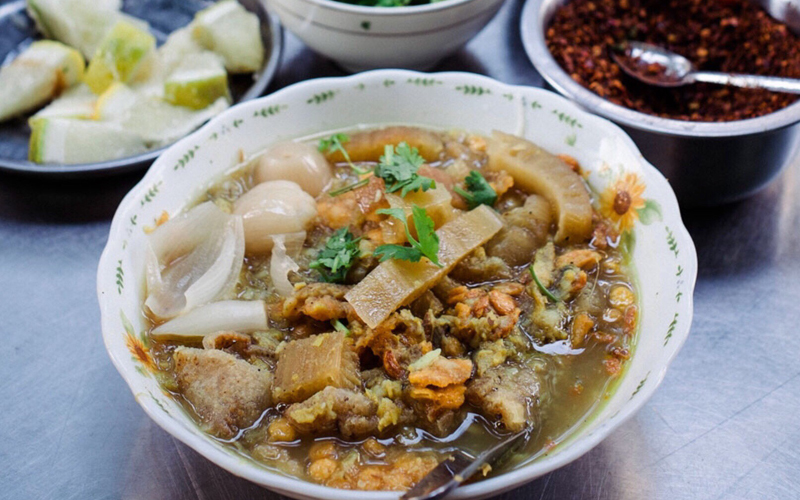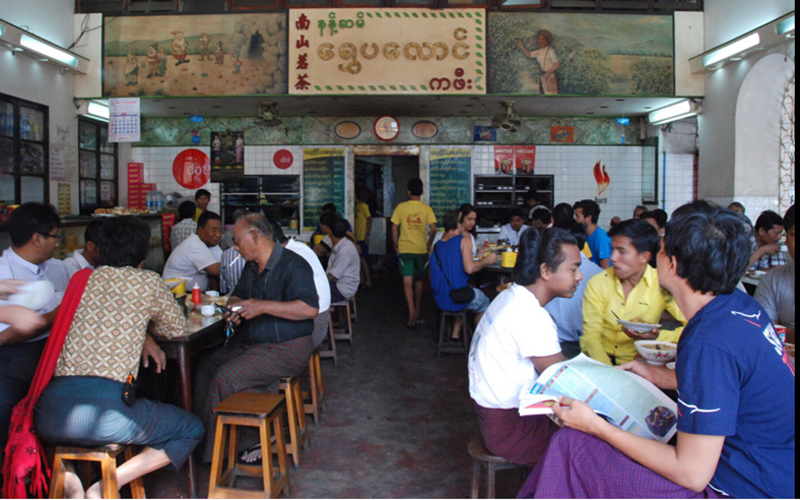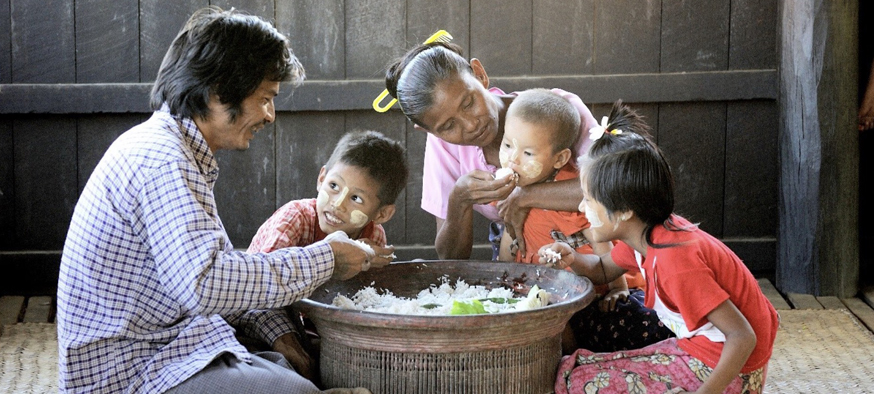Anyone seeking a culinary adventure will find Myanmar a good place to explore, as it has many unique dishes and ingredients awaiting discovery.
Internationally, food from Myanmar has been much less popular than that from its neighbors such as Thailand, China, or India. This is to be expected, as Myanmar was a closed country for many decades and is only now beginning to be recognized internationally.
Diversity and Influences
What is distinctive about Myanmar food? It’s not easy to describe the food of a country as diverse as Myanmar.
Often a country’s stereotypical food does not represent the whole country. For example, the stereotype of Chinese food that comes to mind might be dim sum, but dim sum is actually unique to one southeastern province in China.
The same applies to Myanmar. There are many food types from various influences, both from in-country ethnic groups (Bamar, Shan, Mon, Rakhine, Chin, and many others) and external neighbors (such as Thailand, China, India).
While there are many different kinds of food throughout the country, they share some common traits.
Most Burmese food is prepared with fish or meat broth. Rice (htamin) is usually the main staple, and there will usually be a large variety of accompanying dishes, which may include curried fish or meat, dried salted fish, fritters, fresh or boiled vegetables, and a curried sauce of pickled ngapi.
Ingredients unique to Myanmar include ngapi (fermented fish) and laphet (tea leaves), discussed below. Vegetarian food is only common during special seasons, such as the Buddhist Lent.
As you visit Myanmar and explore its food, you will find it to have a diverse and unique cuisine.
Eating Customs
Myanmar people traditionally eat from a low table, sitting on a mat on the ground. Dishes are served altogether rather than in different stages. Elders are always served first as a sign of respect. Even when they are absent, there is a custom of putting aside the first portion of rice for them as an act of respect.
Bowls and soup plates are commonly used rather than large flat plates, due to the nature of the food.
Burmese people traditionally eat with their hand; specifically, their right hand, as using the left hand to eat is considered rude. Chopsticks and spoons are used for noodle dishes. Knives and forks are rarely used in Burmese homes, but will always be available for guests in restaurants and hotels.
Drinks are not usually served with meals. Instead a light broth or consommé may be served.
Ingredients
Fish and Meat
Seafood ingredients are common in coastal areas, while inland regions such as Mandalay use more poultry, meat, freshwater fish and shrimp. Beef is not common, as it is considered taboo by Buddhists in Myanmar.
Ngapi
A classic ingredient often used in Burmese cooking is ngapi, which is fermented fish. It is used in salads, main dishes, and condiments, as well as for a soup base.
There are diverse versions of ngapi in different states. In Rahkine state (coastal southwest Myanmar), it is made from marine fish, and uses little or no salt. By contrast, in Ayerwady and Tanintharyi (coastal south Myanmar), it is made with freshwater fish and uses a lot of salt. In Shan state (inland northeastern Myanmar), it is made of fermented beans.
Laphet
Laphet, which is fermented tea leaves, is another ingredient you will undoubtedly encounter. It may be eaten as a snack, or with rice, but is also commonly served as salad, called laphet thote. It tastes bitter and tart, and has a stimulant effect, so it is popular with students and people who need to stay up all night.
Best dishes you should try
Mohinga
The national dish in Burma is a breakfast dish called mohinga. It can be found in different variations throughout the country. It is basically a noodle soup with fish broth and sauce, rice noodles, lemongrass, ginger, the pith of banana-tree stalks, and some lentils or vegetables. It is not as heavy or oily as many other Burmese dishes.
Laphet Thote
Laphet thote, or tea-leaf salad, is also one of the most popular dishes in Myanmar. Usually, the salad includes many ingredients, as shown in the diagram below.

Tea Shops
Going to a tea shop is a good opportunity for you to meet locals, for hanging out in a tea shop is an integral part of Burmese life. It is where friends and families meet and catch up. In the tea shops you can try Myanmar tea, which is usually milky, sweet, and hot.
Tea-shop food depends on the individual shop. For example, the Burmese ones usually serve noodles, the Muslim ones serve a south-Asian range including samosas, while the Chinese tea shops serve a range of meaty rice dishes, dim sum, or buns.

Rest Assured!
Our tours arrange western-standard restaurants. If you find that Burmese food is not compatible with your palate, don’t worry! There will be other choices such as Thai, Chinese, or western food.
Most 3-star or higher-standard hotels have good restaurants with delicious food. Special dietary requirements such as vegetarian or gluten-free food can usually also be accommodated.
Visit Myanmar with Panoramic Myanmar Tour
We provide tailor-made tours to Myanmar. Tours typically start or end in Yangon or Mandalay and last approximately 13days; visiting Yangon, Bagan, Mandalay and Inle Lake.
You might like:

